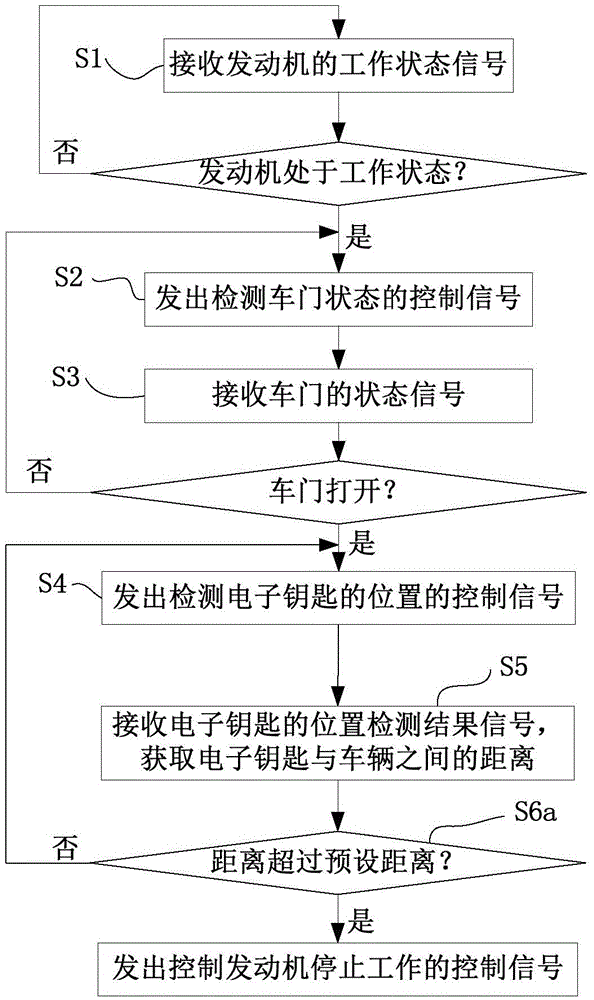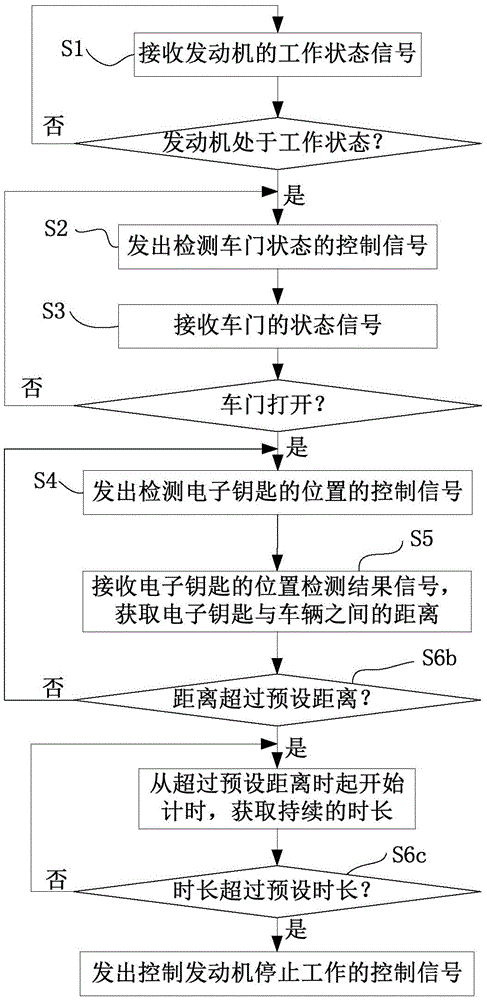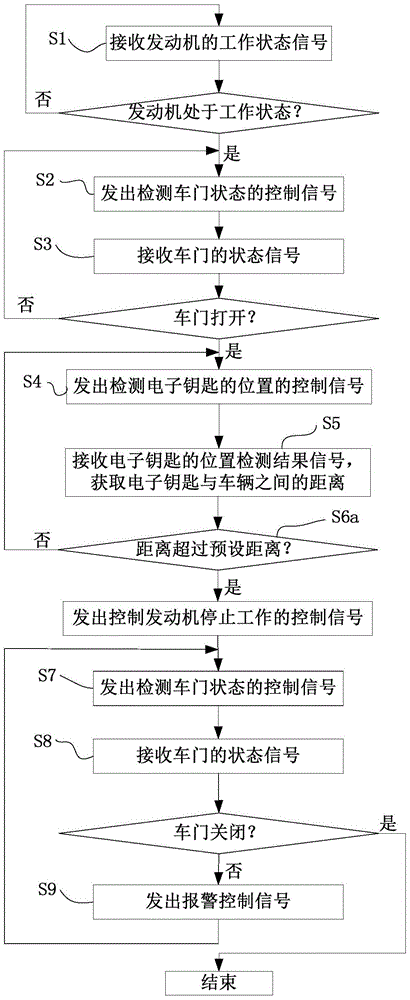Vehicle control method, device and system and vehicle
A vehicle control and vehicle technology, applied in signal devices, vehicle components, engine control, etc., can solve the problem of inability to effectively detect and control the engine state of the vehicle, and achieve the effect of avoiding losses and avoiding losses.
- Summary
- Abstract
- Description
- Claims
- Application Information
AI Technical Summary
Problems solved by technology
Method used
Image
Examples
Embodiment 1
[0077] This embodiment provides a vehicle control method, such as figure 1 shown, including the following steps:
[0078] S1. Receive the working state signal of the engine, and judge whether the engine is in the working state. In a specific application, for a vehicle equipped with a keyless start system (Keyless Start System), when the driver enters the vehicle, the keyless start system will detect the electronic key carried by the driver in the car, and the driver presses the Press the start button on the center console or turn the start guide to perform the ignition operation to start the engine. There is no need to insert the key to start the ignition like traditional vehicles. But there are also some safety hazards in this way. For example, the driver suddenly has something to leave the vehicle after starting the engine, because the vehicle is started without a key, and the driver does not need to pull out the key when starting the engine to ignite, and the engine runnin...
Embodiment 2
[0085] like figure 2 As shown, in this embodiment, compared with embodiment 1, step S6a is replaced by:
[0086] S6b. Start timing when the distance between the electronic key and the vehicle exceeds the preset distance, and acquire the duration of the distance between the electronic key and the vehicle exceeding the preset distance.
[0087] S6c. When the duration exceeds the preset duration, send a signal to control the engine to stop working. If the preset duration is not exceeded, continue to count the duration.
[0088] In a specific application, when the driver leaves the vehicle, that is, when the distance between the electronic key and the vehicle exceeds the preset distance, the timer starts when the distance between the electronic key and the vehicle exceeds the preset distance, and obtains the distance between the electronic key and the vehicle exceeds the preset distance. The duration of the distance; when the duration exceeds the preset duration, a signal to co...
Embodiment 3
[0090] On the basis of embodiment 1 or embodiment 2, such as image 3 or Figure 4 As shown, this embodiment also includes after step S4:
[0091] S7. Sending out a control signal for detecting the state of the vehicle door.
[0092] S8. Receive the status signal of the car door, and judge whether the car door is closed.
[0093] S9. If the door is not closed, an alarm control signal is sent. Then return to step S7 and continue to detect the state of the car door. If the door is closed, the detection of the state of the door is ended.
[0094] Preferably, after sending the control signal for controlling the engine to stop working, enter step S7 again, send the control signal for detecting the state of the door again, detect the state of the door, and judge whether the driver closes the door after leaving the vehicle. Of course, it is also possible to enter step S7 after detecting that the driver has left the vehicle to send a control signal for detecting the position of t...
PUM
 Login to View More
Login to View More Abstract
Description
Claims
Application Information
 Login to View More
Login to View More - R&D
- Intellectual Property
- Life Sciences
- Materials
- Tech Scout
- Unparalleled Data Quality
- Higher Quality Content
- 60% Fewer Hallucinations
Browse by: Latest US Patents, China's latest patents, Technical Efficacy Thesaurus, Application Domain, Technology Topic, Popular Technical Reports.
© 2025 PatSnap. All rights reserved.Legal|Privacy policy|Modern Slavery Act Transparency Statement|Sitemap|About US| Contact US: help@patsnap.com



